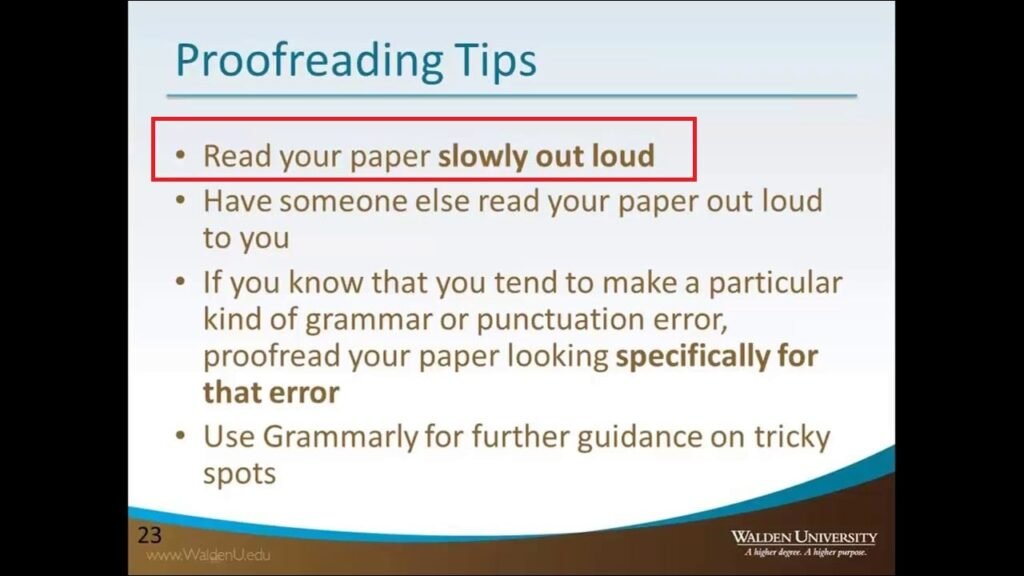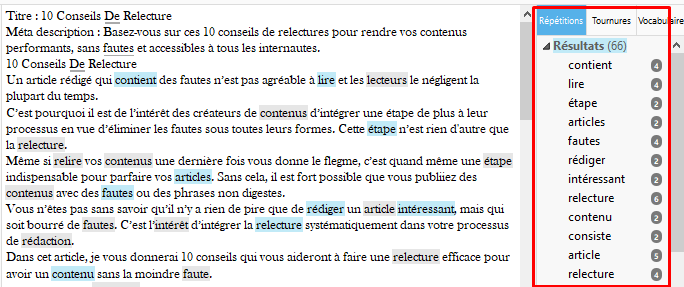An article written that contains mistakes is not pleasant to read and readers neglect it most of the time.
This is why it is in the interest of content creators to integrate one more step into their process in order to eliminate mistakes in all their forms. This step is nothing other than proofreading.
Even if rereading your content one last time makes you calm, it is still an essential step to perfect your articles. Without this, it is very possible that you will publish content with mistakes or indigestible sentences.
You are probably aware that there is nothing worse than writing an interesting article, but one that is full of mistakes. This is the point of integrating proofreading systematically into your writing process.
In this article, I will give you 10 tips that will help you proofread effectively to have flawless content.
Table of Contents
ToggleWhat is proofreading?
Proofreading is an activity which consists of reading a text, an article, content, etc. It is considered the last part of writing an article.
Indeed, proofreading consists of:
- Correct grammatical mistakes;
- Check the spelling of words;
- Analyze the positioning of punctuations;
- Study the layout of the article;
- Etc.
You should know that it is not only necessary for blog posts, but also for any other writing. For an editor, proofreading is done before publication of the article and makes it possible to detect errors that remain in the content.
So, to have quality content and above all without mistakes that could catch the attention of readers, proofreading is the ideal solution that should not be neglected. Here is some tips that will probably help you in proofreading your articles.
1. Find a quiet environment to proofread
To proofread, you need a quiet place where nothing should distract you. This means that you should avoid as much as possible an environment where there is noise, radio, television, music, etc.
Remember that your computer can also be a source of distraction that can hinder the proofreading stage. So, you simply need to disable notifications, incoming messages, etc.
In fact, if you are distracted or preoccupied with other things while proofreading, you can easily miss mistakes without even realizing it.
Overall, the proofreading phase must be done in optimal conditions which will allow you to better concentrate on the work.
2. Start with reading aloud
One of the objectives of proofreading is to check the flow of an article, that is, to check whether it is good to hear. The reading aloud technique is then effective in achieving this objective. If you try it, you may be surprised at the resulting result.

Source : ytimg
In fact, when you read out loud, you have the opportunity to hear yourself and quickly identify flaws in your content. You find it easier to notice:
- Long sentences;
- The missing letters;
- Forgotten words or expressions;
- Inappropriate punctuation marks;
- Etc.
This simply means that this proofreading strategy allows you to have an overview of everything that is incorrect in your article.
3. Reread the article backwards
Starting reading a text from the last sentence to the first seems to be impossible and above all counter-intuitive. But the principle is simple, you just need to reread the content with great attention and objectivity.
In fact, rereading your content backwards will help you identify and correct:
- The mistakes you made;
- Frequently used words or expressions that you need to review;
- Poorly written sentences that you can clarify better;
- Paragraphs that are too long that you can simplify;
- Etc.
This reverse proofreading strategy is effective for “hot reading“. In other words, when you have to read the content immediately after writing it, it is advisable to use this technique.
However, you can use this proofreading technique to make the “cold reading ».

Source : slideplayer
Indeed, this type of reading consists of leaving the content for a few minutes or even for around 24 hours and coming back later to read it.
It allows you to somehow forget the content of the article and discover it again. After that, you come back to the same article which you reread calmly and calmly.
4. Check the logic of ideas
Although the goal of proofreading is to correct spelling and grammar, it is important that you ensure consistency of ideas. In other words, you need to see if the ideas developed relate to the context of your article.
You can give details or bring new ideas to make your text more perfect. Otherwise, you can correct the mistakes in your content, but it would not be worthy of interest.
Likewise, your article could not be taken into consideration by search engines or by Internet users. So, checking the coherence of the ideas developed in a text is important for content optimization.
5. Identify and correct the spelling of words
The majority of writers do not fully trust word processing software. But to have an article without mistakes, it is advisable to use a spell checker which will help you check and correct spelling and grammatical errors.
Speaking of correction tools, we have:
- Google Docs, a text editor which allows you to quickly detect mistakes, offers correction suggestions and leaves the choice to the editor to apply them or not;

- Antidote, a powerful tool capable of identifying spelling, grammatical and typographical errors;
- Yoast pour WordPress, an extension that improves the readability of your content;
- And many other tools.
In addition to correcting incorrectly written word formations in content, these tools are also used to review the writing of proper names, companies, brands, products, etc.
But sometimes it happens that they do not detect an error in the names. In this case, you can also search for the correct writing from the Google search engine. It will surely give you the real formation of the name you are looking for.
6. Analyze and diversify overused phrases in content
Repetition of words or expressions in content does not make the text fluid and pleasant to read. In this case, the ideal is to vary the terms that you have overused in the creation of your texts, especially the first words of each paragraph.
If possible, you can search for synonymous words related to the word you want to replace.

When you start your subheadings or paragraphs with the same term, chances are your article won’t be as searched for.
For example, if you used to start your paragraphs with “le” or “la”, it’s time to review this writing style.
When proofreading, try to vary your vocabulary and word sentences so that they don’t sound alike. This makes your article digestible.
7. Check the correct use of punctuation marks
It is true that spelling and grammatical errors are not tolerated when writing an article.
Of course, there are also the small details that you must take into account, such as punctuation. We can cite:
- Dots ;
- Apostrophes;
- The two points ;
- Fleas ;
- Parentheses;
- Commas;
- Etc.

While proofreading a text, pause often at each punctuation mark to check whether they are correctly placed to help readers follow the pace of the text.
In other words, the correct use of these signs allows you to pause from time to time and better understand the substance of the writing.
8. Study the formatting of the article
Before tackling the formatting phase, your content should be error-free. You will therefore concentrate on the presentation of the text to know if the different passages of the article are well organized and harmonized.
So, when you proofread your content, you need to check if you could:
- Develop a precise idea per paragraph;
- Bold the relevant passages;
- Insert hyperlinks and images in the correct place.
All this allows Internet users to quickly find themselves in your content. In addition, with bolding and links, it is easier for them to get the information they are looking for and are interested in the content.
9. Avoid read-ahead
As stated from the beginning, proofreading a written article is very important and should not be neglected. Normally, it must be done after the writing phase.
On the other hand, some writers tend to reread their writing at the same time as they are writing. In doing so:
- You will waste enough time;
- You will have to develop ideas that no longer fit with the content;
- And the quality of your productivity could decline.
To avoid all this, you should not proofread your article while writing, it is better to do it after the content has been fully created.
10. Entrust the proofreading of the article to other editors
There is a saying that goes, together we are strong. Sometimes, by reading and rereading an article you have written, you may no longer be able to spot your errors. However, a text that contains mistakes cannot be quality content.
This is why it is best to seek help from other editors who can help you proofread your article.
With all this, you can meet the requirements of search engines and provide quality articles to Internet users.
In summary
Proofreading an article or text is an important step that any editor cannot ignore. It is done before the publication of the article as well as after writing and helps you share error-free and quality content on the internet.
By putting these 10 tips in this article into practice, proofreading should no longer be a complex thing for you. You will find it easy to reread your texts.
If this is not always the case, the ideal is to use the service of a professional proofreader. The latter guarantees faultless content adapted to the level of understanding of all readers.
If you want to write quality content that will interest Internet users, you can rely on the 12 Steps to Writing Exceptional Content.


